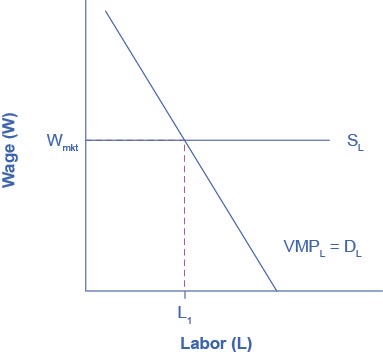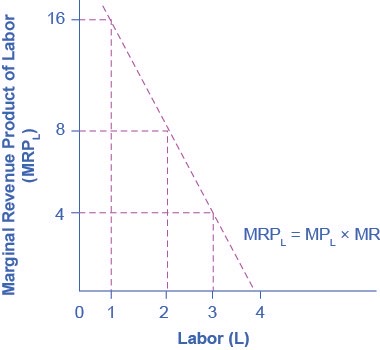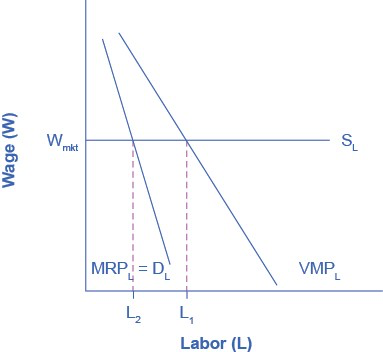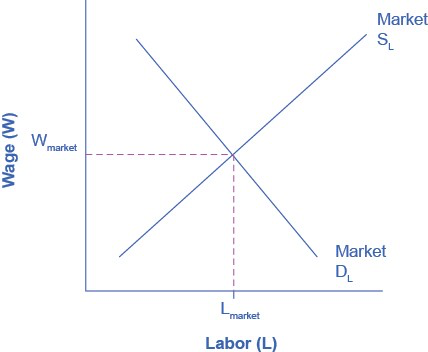Labor Demand in Perfectly Competitive Markets
What is Labor Demand in Perfectly Competitive Markets
- Marketing, Advertising, Sales & PR
- Accounting, Taxation, and Reporting
- Professionalism & Career Development
-
Law, Transactions, & Risk Management
Government, Legal System, Administrative Law, & Constitutional Law Legal Disputes - Civil & Criminal Law Agency Law HR, Employment, Labor, & Discrimination Business Entities, Corporate Governance & Ownership Business Transactions, Antitrust, & Securities Law Real Estate, Personal, & Intellectual Property Commercial Law: Contract, Payments, Security Interests, & Bankruptcy Consumer Protection Insurance & Risk Management Immigration Law Environmental Protection Law Inheritance, Estates, and Trusts
- Business Management & Operations
- Economics, Finance, & Analytics
What is Labor Demand in Perfectly Competitive Markets?
The question for any firm is how much labor to hire.
We can define a Perfectly Competitive Labor Market as one where firms can hire all the labor they wish at the going market wage. Think about secretaries in a large city. Employers who need secretaries can probably hire as many as they need if they pay the going wage rate.
Graphically, this means that firms face a horizontal supply curve for labor. Given the market wage, profit maximizing firms hire workers up to the point where: Wmkt = VMPL

What is Labor Demand in Imperfectly Competitive Markets?
If the employer does not sell its output in a perfectly competitive industry, they face a downward sloping demand curve for output, which means that in order to sell additional output the firm must lower its price. This is true if the firm is a monopoly, but it’s also true if the firm is an oligopoly or monopolistically competitive. In this situation, the value of a worker’s marginal product is the marginal revenue, not the price. Thus, the demand for labor is the marginal product times the marginal revenue.
The Demand for Labor = MPL x MR = Marginal Revenue Product

For firms with some market power in their output market, the value of additional output sold is the firm’s marginal revenue. Since MPL declines with additional labor employed and since MR declines with additional output sold, the firm’s marginal revenue declines as employment increases.
Everything else remains the same as we described above in the discussion of the labor demand in perfectly competitive labor markets. Given the market wage, profit-maximizing firms will hire workers up to the point where the market wage equals the marginal revenue product.

Determining the Wage Rate in Labor Markets
The demand for labor curve is a downward sloping function of the wage rate. The market demand for labor is the horizontal sum of all firms’ demands for labor. The supply for labor curve is an upward sloping function of the wage rate. This is because if wages for a particular type of labor increase in a particular labor market, people with appropriate skills may change jobs, and vacancies will attract people from outside the geographic area. The market supply for labor is the horizontal summation of all individuals’ supplies of labor.

In a competitive labor market, the equilibrium wage and employment level are determined where the market demand for labor equals the market supply of labor.
Like all equilibrium prices, the market wage rate is determined through the interaction of supply and demand in the labor market. Thus, for competitive markets the wage rate and number of workers hired.
The United States Census Bureau for the Bureau of Labor Statistics publishes The Current Population Survey, which is a monthly survey of households (link is on that page), which provides data on labor supply, including numerous measures of the labor force size (disaggregated by age, gender and educational attainment), labor force participation rates for different demographic groups, and employment. It also includes more than 3,500 measures of earnings by different demographic groups.
The Current Employment Statistics, which is a survey of businesses, offers alternative estimates of employment across all sectors of the economy.
The link labeled "Productivity and Costs" has a wide range of data on productivity, labor costs and profits across the business sector.
Related Topics
- Labor Economics
-
Labor Market Equilibrium
- Labor Market
- Labor Market Equilibrium
- Labor Market Efficiency
- Price, Supply, and Demand in the Labor Market
- Equilibrium Wage
- Shifts in the Demand for Labor
- What Causes Shifts in the Supply Labor?
- How Technology affects Demand for Labor?
- Minimum Wage as a Price Floor in the Labor Market
- What is the First Rule of Labor Markets?
- Labor Demand in Perfectly Competitive Markets
- Imperfect Competition in Labor Markets
- Monopsony
- Oligopsony
- Labor Market Power of Employers
- What is the marginal Cost of Labor?
- Labor Market Power of Employees
- What is a Bilateral Monopoly in a Labor Market?
- Wage Elasticity of Labor Supply
- Equilibrium in Supply and Demand in Labor Markets
- Shifts in Supply and Demand in Labor Markets